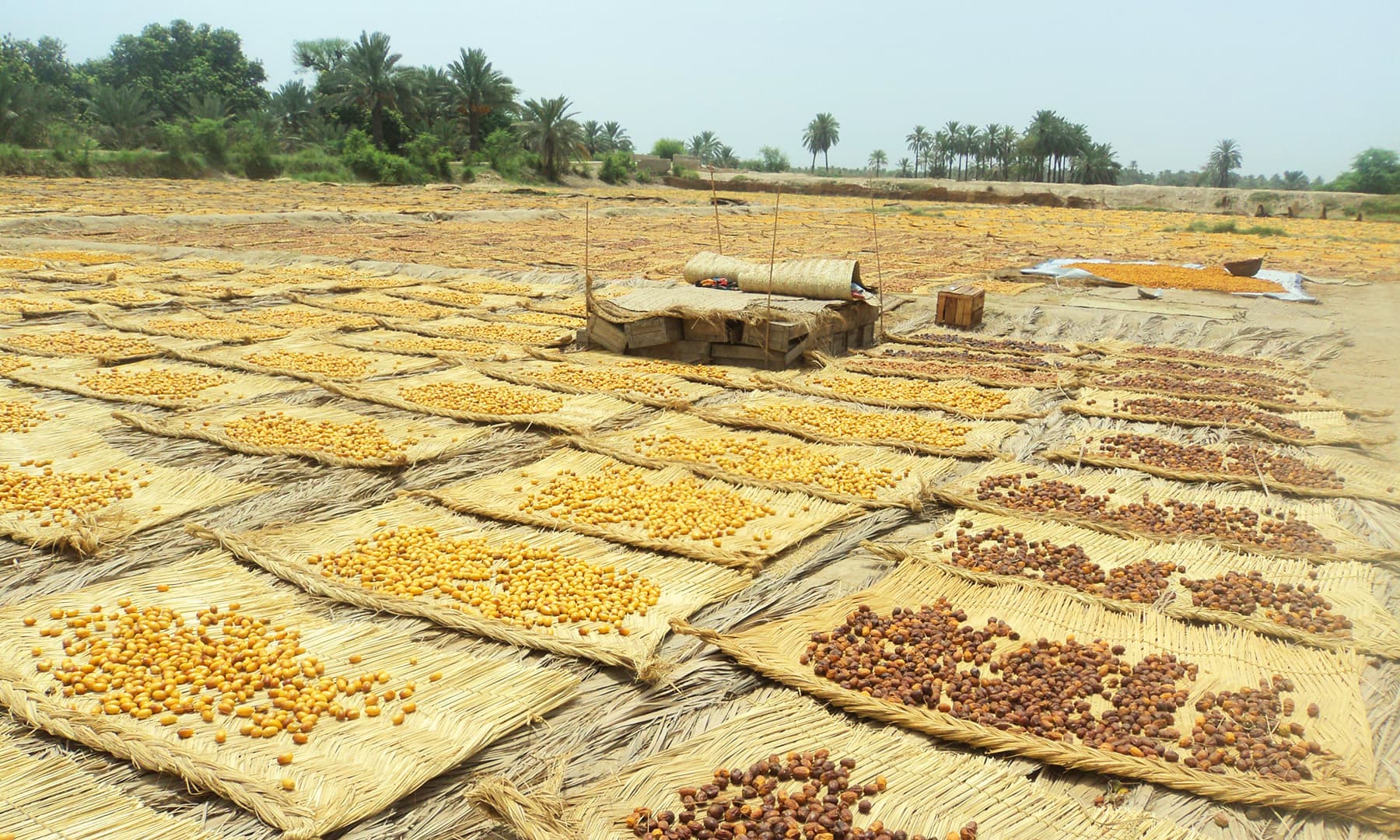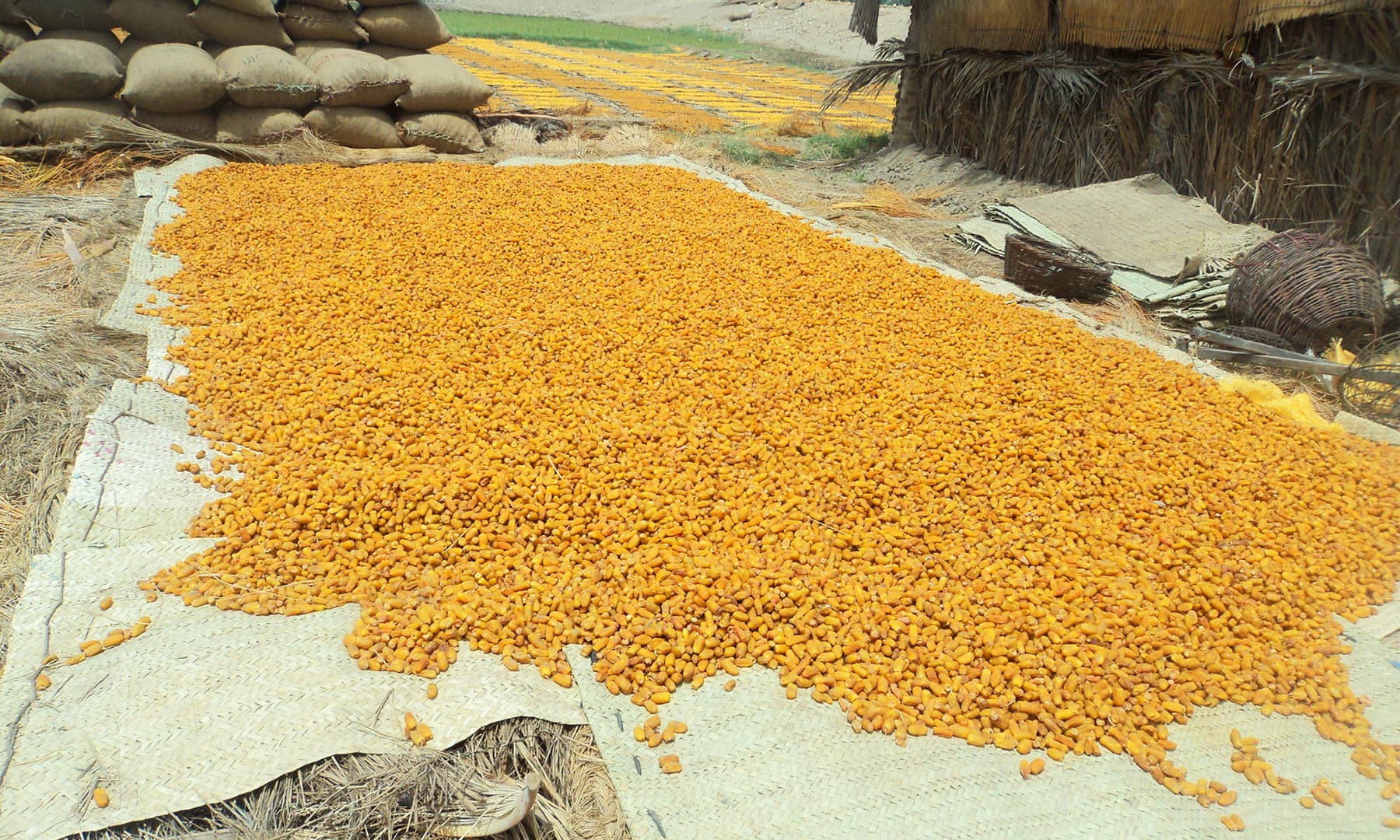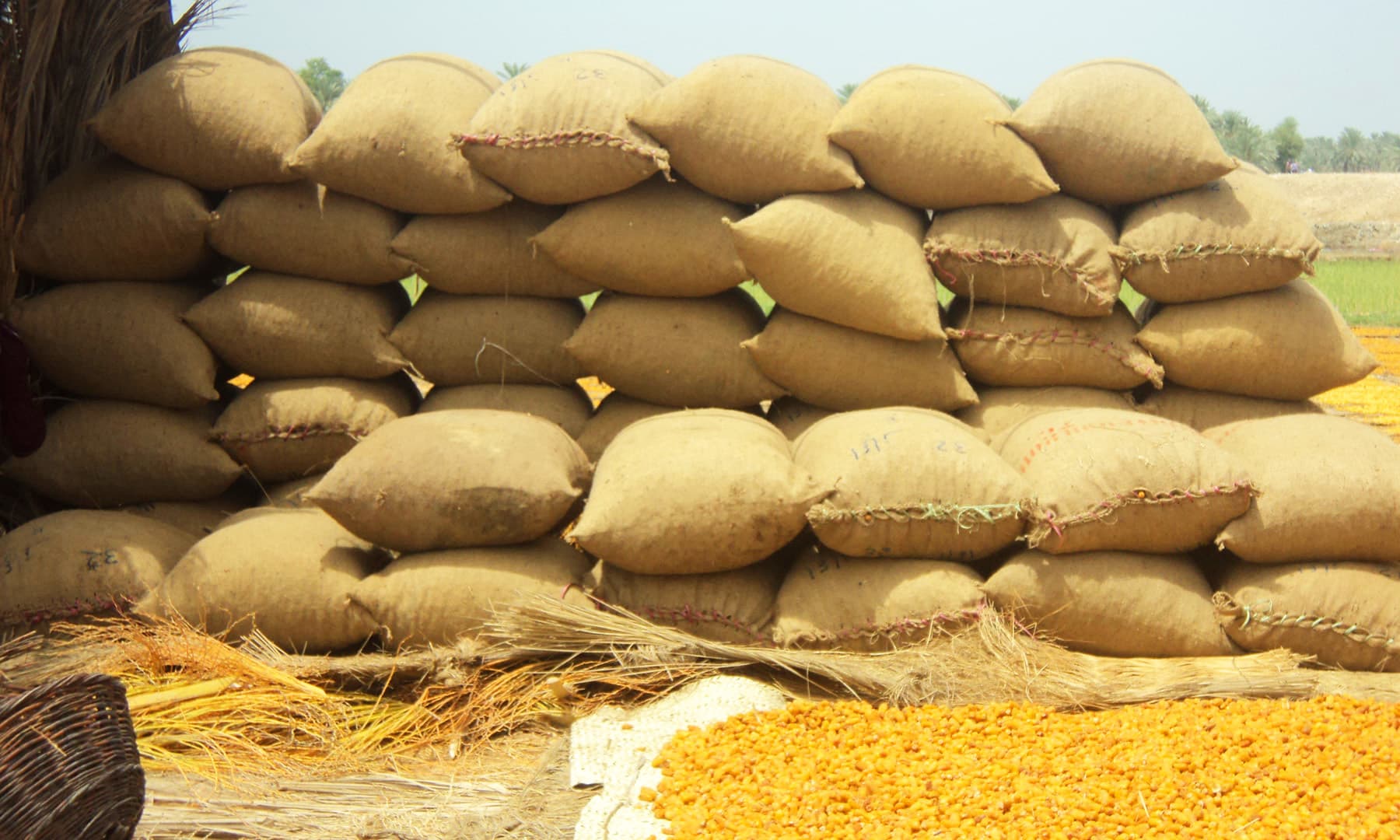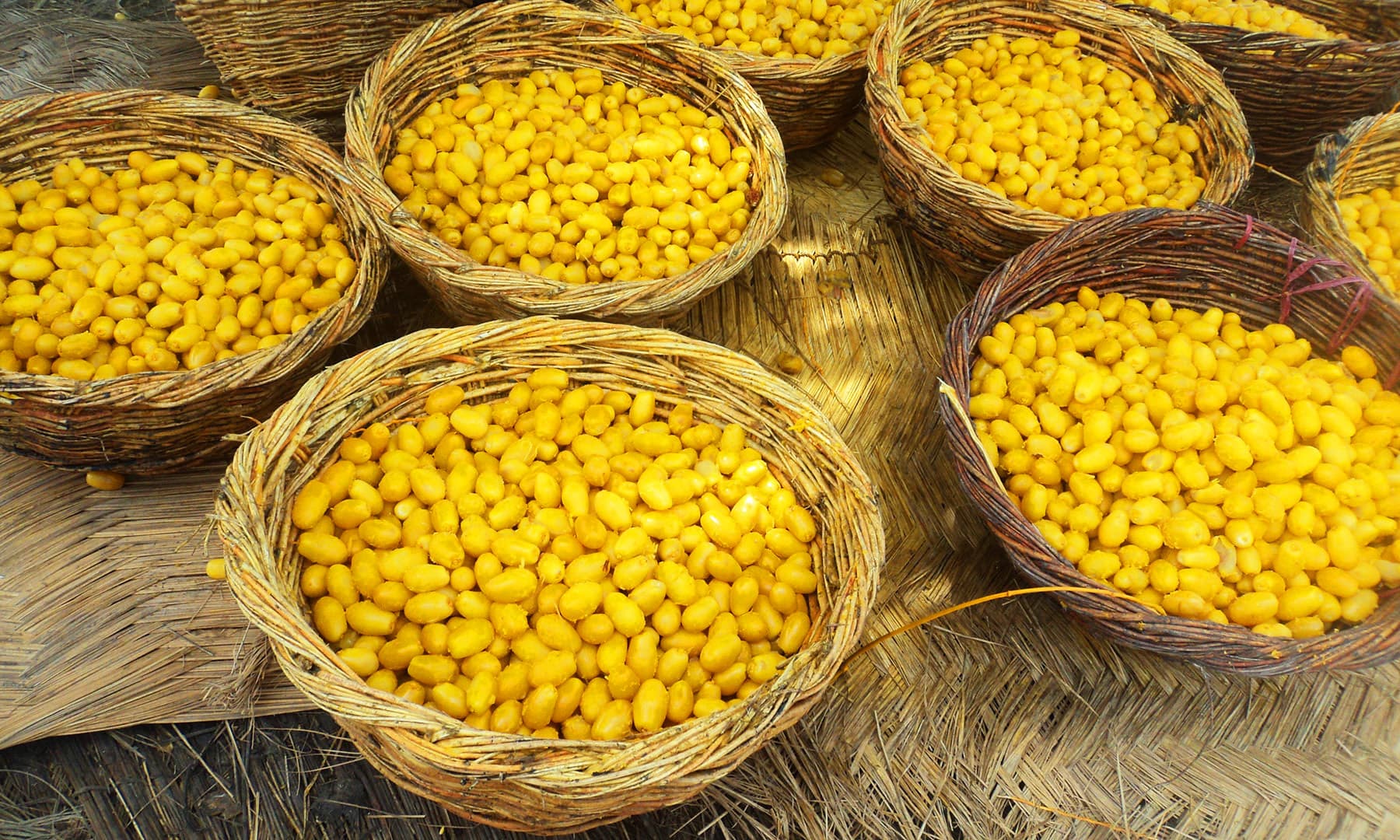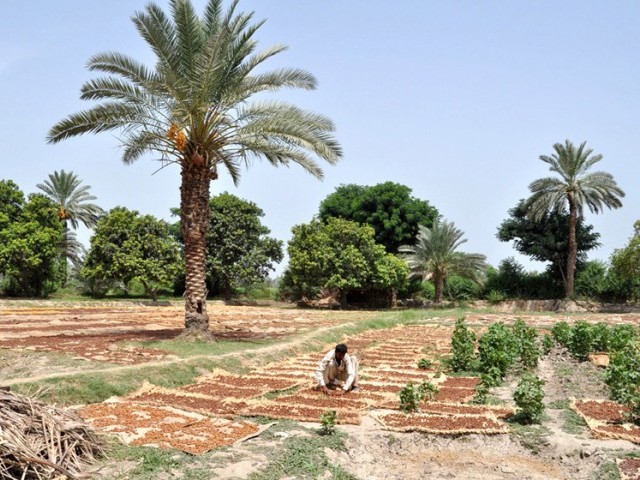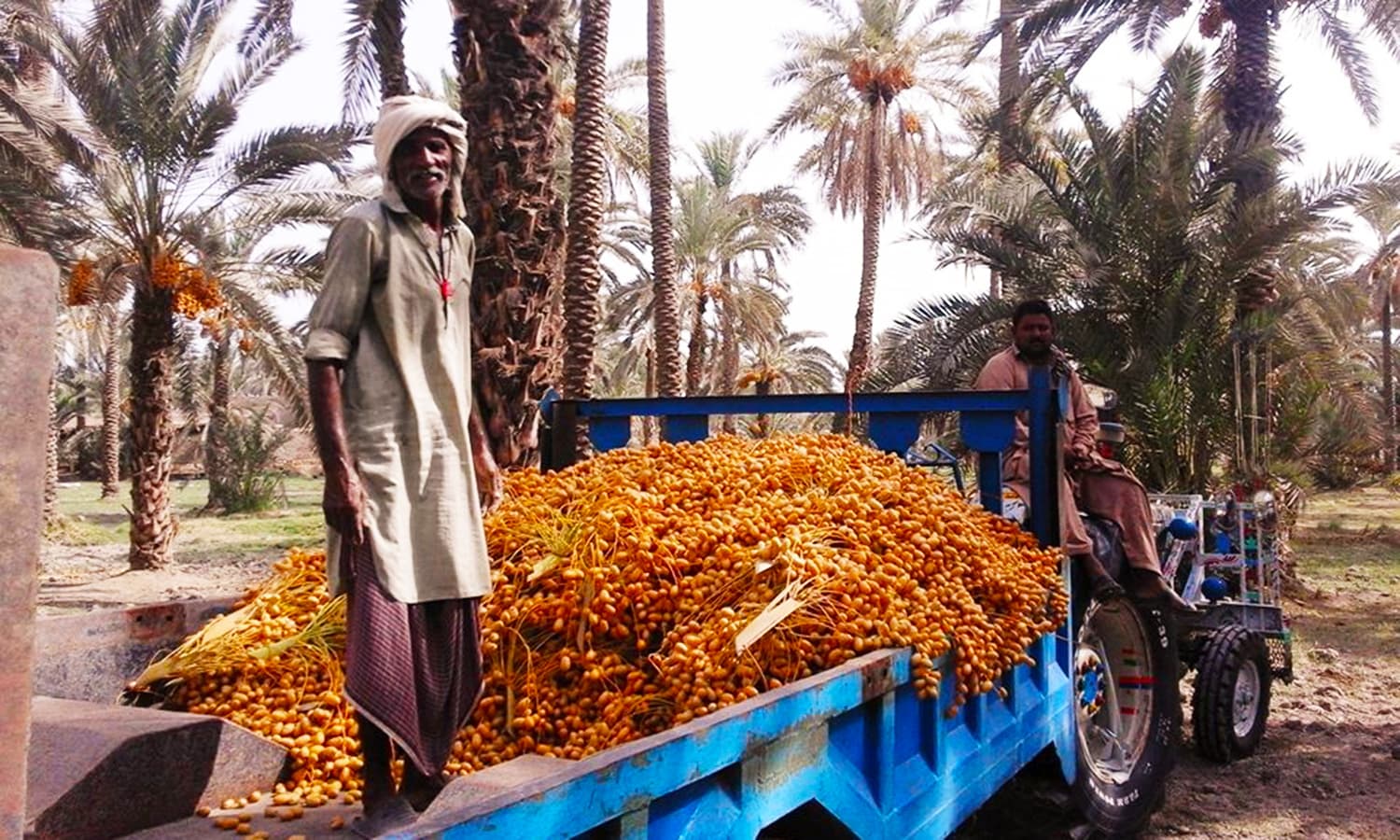Devil Soul
ELITE MEMBER

- Joined
- Jun 28, 2010
- Messages
- 22,931
- Reaction score
- 45
- Country
- Location
Khairpur's golden harvest and the women behind it
NADIA AGHA
Although date palm is a developing industry in Pakistan, the country is already one of the largest producers of this fruit crop in the world. And in the business of producing dates, the city of Khairpur holds a very significant place.
Khairpur’s village economy is based on date palm processing and export; this is a source of employment not only for the villagers in Khairpur but also residents of nearby cities, who migrate to the district to work during the crop harvest season. Most of the workers are men, though, with only a small number of women seen working in farms, and that too, the more aged ones.

A majority of Khairpur's dates are exported to India, Sri Lanka and Bangladesh.
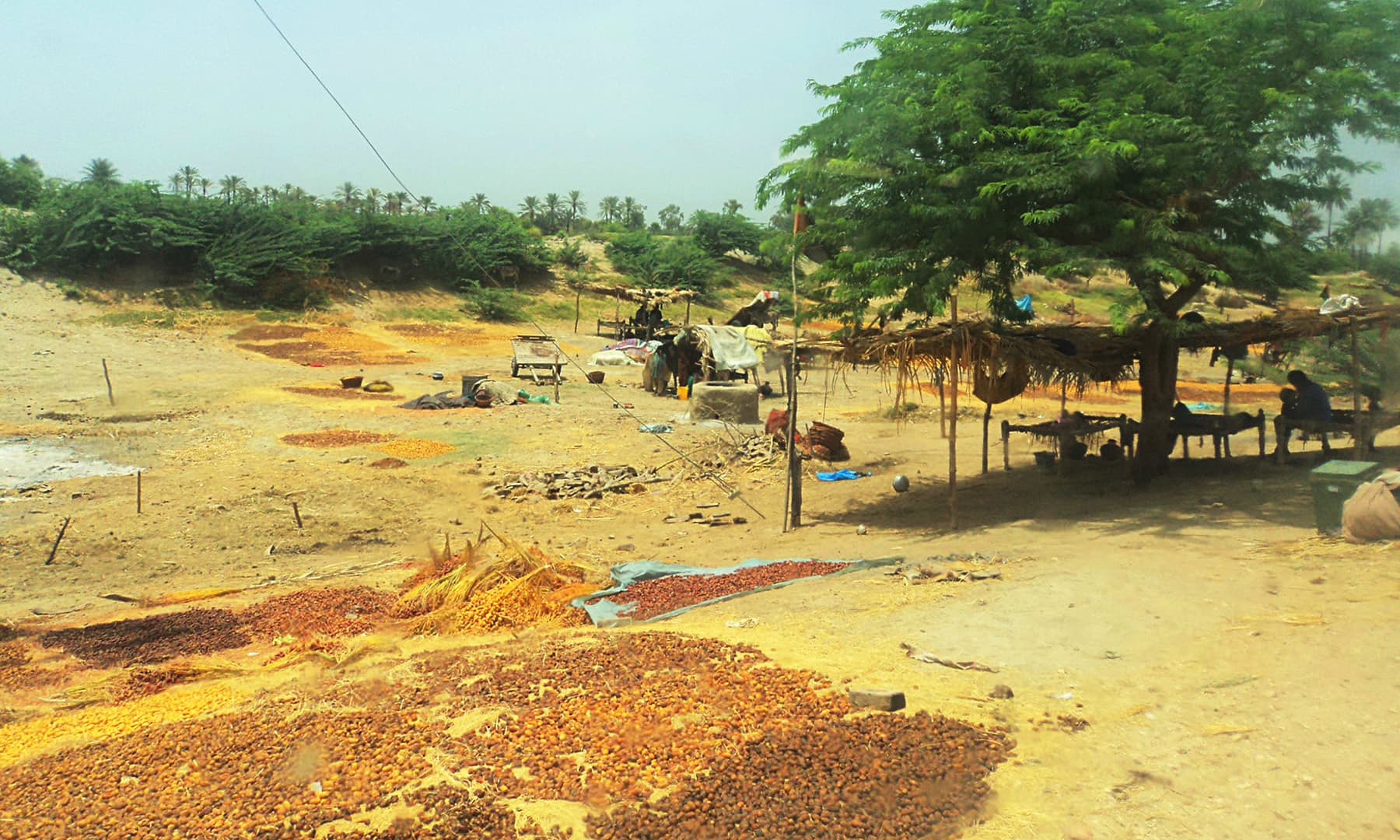
The total annual production of dates in Pakistan is about 0.54 million tons with contribution from Sindh at 0.28 million tonnes.
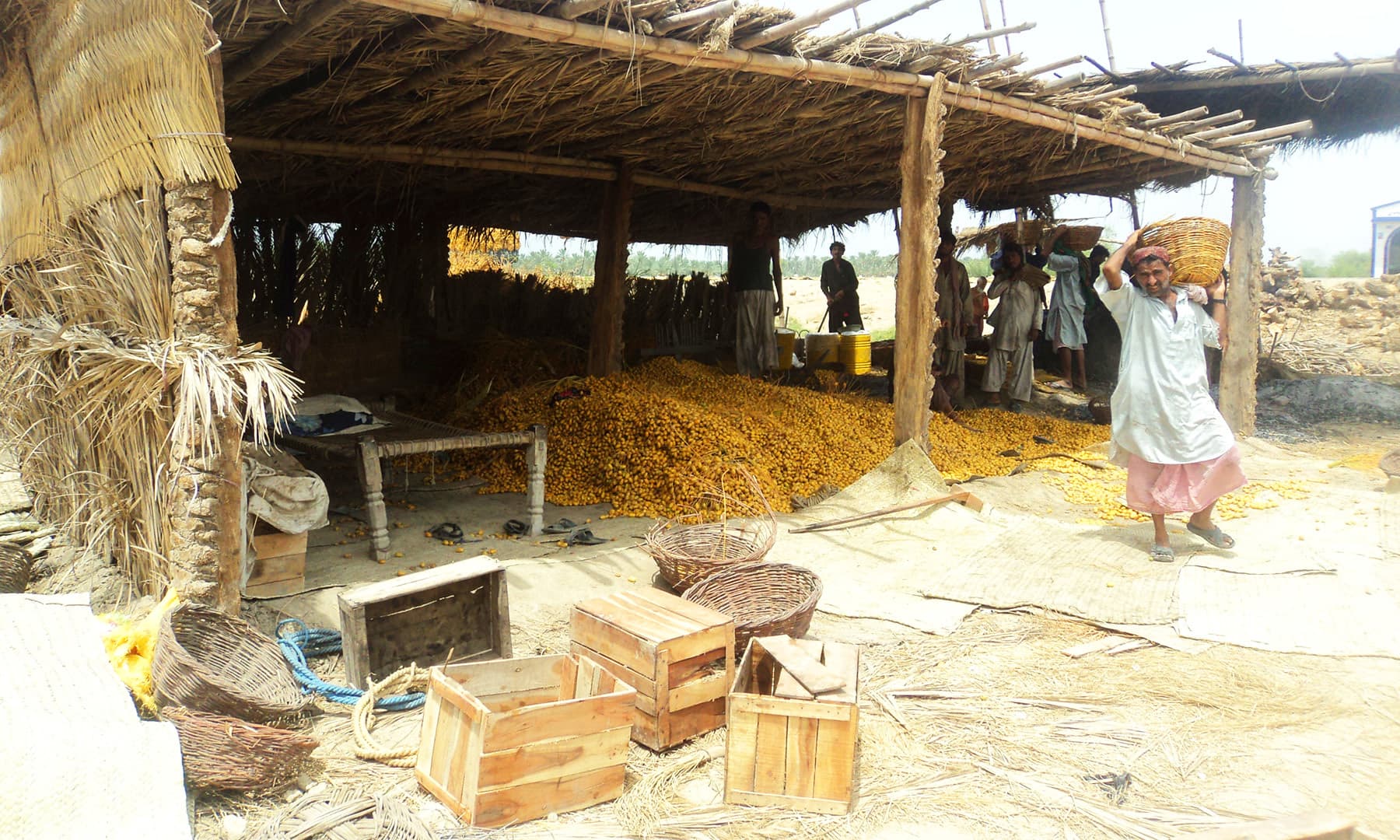
The date variety predominantly found in Khairpur is called Aseel. 85 per cent of these dates are dried and turned into choharas.

The dates are boiled in water mixed with yellow colour for some time before being taken out to dry.
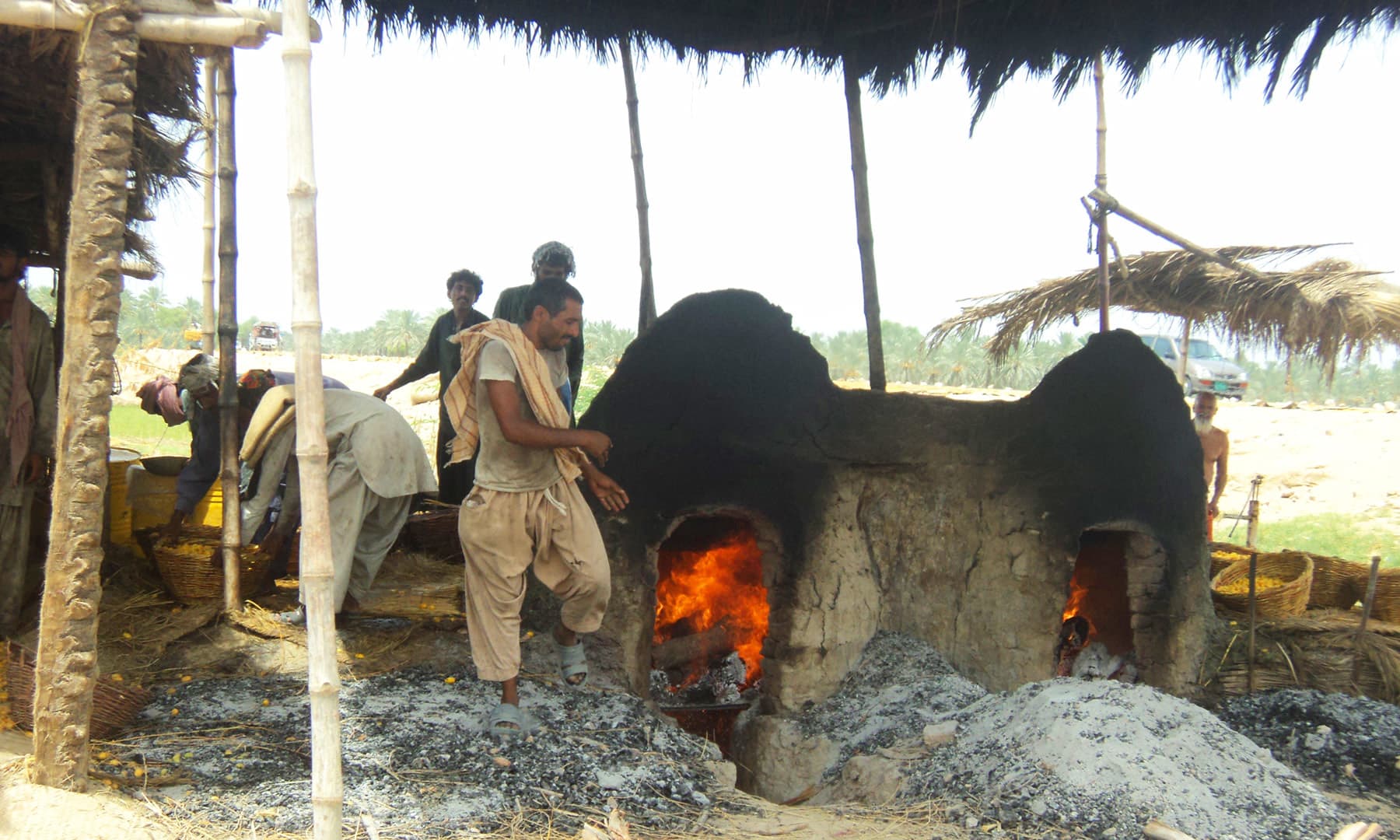
A large number of men in the villages do not have regular employment and rely on the date palm business.

The dates are boiled in water mixed with yellow colour for about 20 minutes before being taken out to dry.
As in other parts of Pakistan, young women’s economic independence in this region is also subject to patriarchal authority; their access to the public sphere is strictly controlled and they are mostly restricted to the private sphere. Young women, therefore, cannot carry out income-generating activities by directly working in the fields. There is a stigma attached to their mobility.
But Khairpur's young women still do not sit idle and participate in this business indirectly.
They use the date palm by-products to make handicrafts such as mats (tado), baskets (tokri), pots (pindi) and hand fans, besides processing the dates andchoharas (dried dates) at their homes. The date palm leaves are utilised to make hand fans, while the mats are used to sun dry the fruit.
The mats are the hardest to make as the work involves sophistication and its straws can damage the hands.
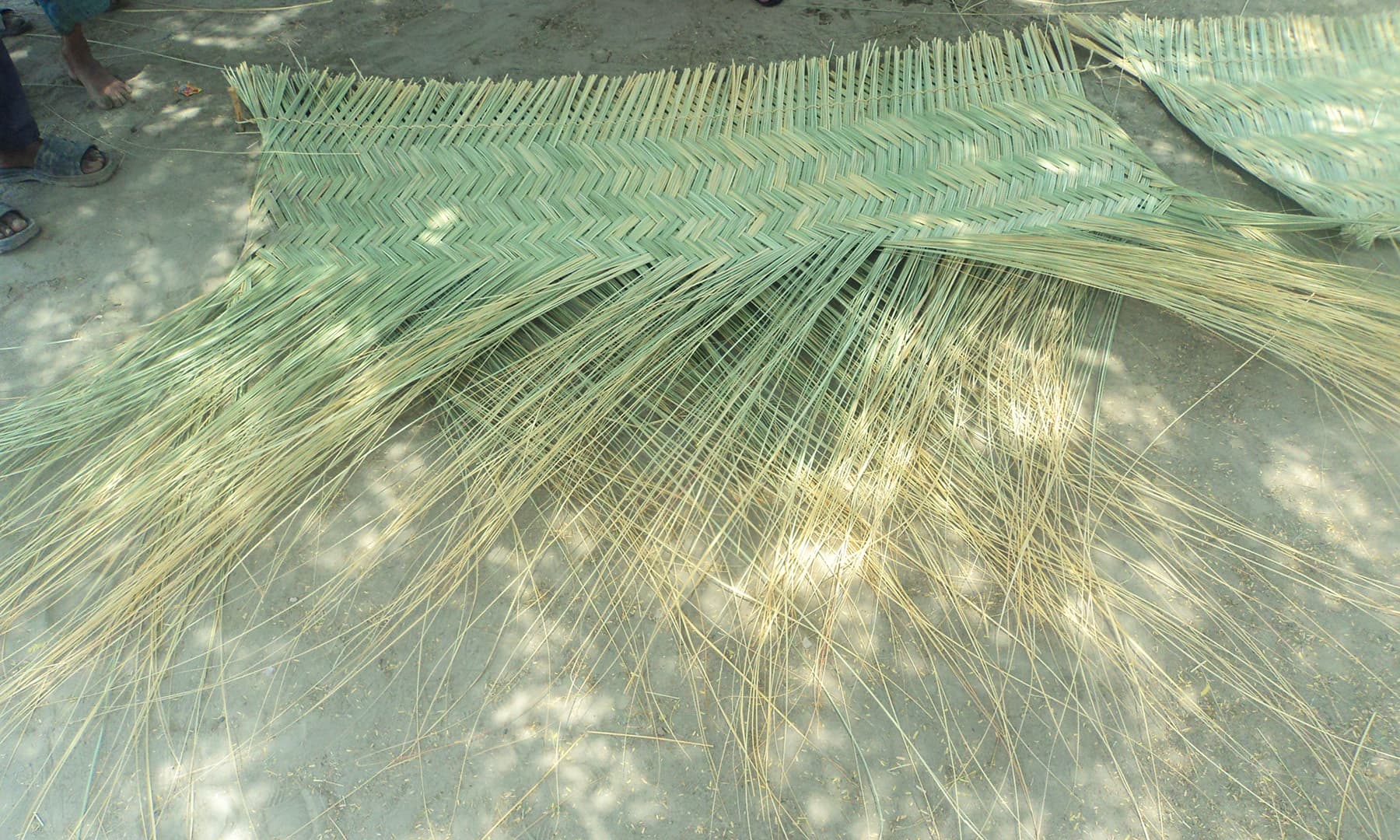
A half woven Tado.
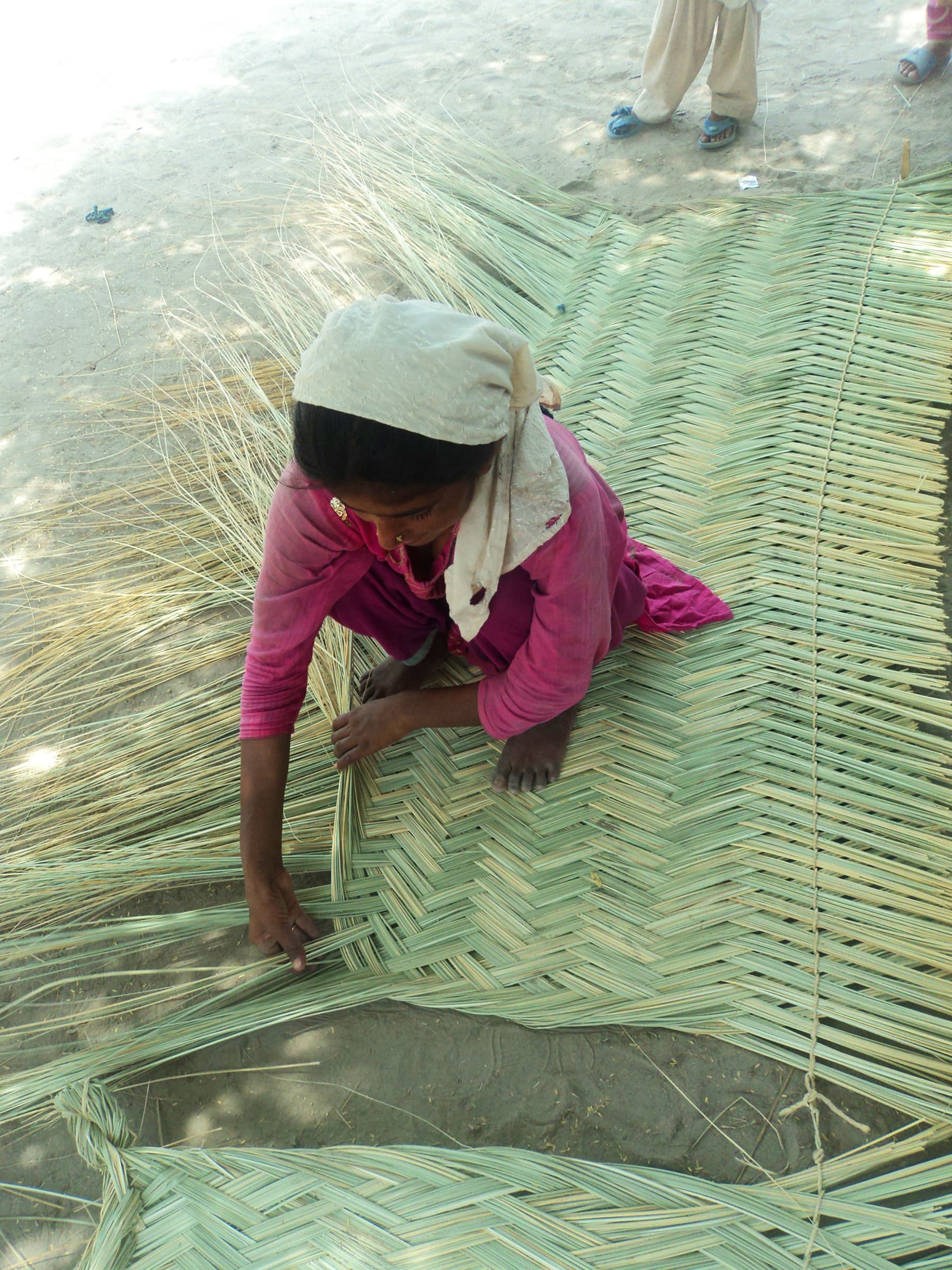
Weaving a Tado can severely hurt the hand.
NADIA AGHA
Although date palm is a developing industry in Pakistan, the country is already one of the largest producers of this fruit crop in the world. And in the business of producing dates, the city of Khairpur holds a very significant place.
Khairpur’s village economy is based on date palm processing and export; this is a source of employment not only for the villagers in Khairpur but also residents of nearby cities, who migrate to the district to work during the crop harvest season. Most of the workers are men, though, with only a small number of women seen working in farms, and that too, the more aged ones.

A majority of Khairpur's dates are exported to India, Sri Lanka and Bangladesh.

The total annual production of dates in Pakistan is about 0.54 million tons with contribution from Sindh at 0.28 million tonnes.

The date variety predominantly found in Khairpur is called Aseel. 85 per cent of these dates are dried and turned into choharas.

The dates are boiled in water mixed with yellow colour for some time before being taken out to dry.

A large number of men in the villages do not have regular employment and rely on the date palm business.

The dates are boiled in water mixed with yellow colour for about 20 minutes before being taken out to dry.
As in other parts of Pakistan, young women’s economic independence in this region is also subject to patriarchal authority; their access to the public sphere is strictly controlled and they are mostly restricted to the private sphere. Young women, therefore, cannot carry out income-generating activities by directly working in the fields. There is a stigma attached to their mobility.
But Khairpur's young women still do not sit idle and participate in this business indirectly.
They use the date palm by-products to make handicrafts such as mats (tado), baskets (tokri), pots (pindi) and hand fans, besides processing the dates andchoharas (dried dates) at their homes. The date palm leaves are utilised to make hand fans, while the mats are used to sun dry the fruit.
The mats are the hardest to make as the work involves sophistication and its straws can damage the hands.

A half woven Tado.

Weaving a Tado can severely hurt the hand.



